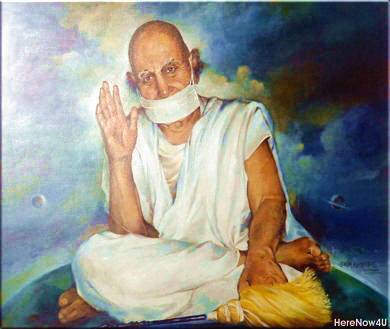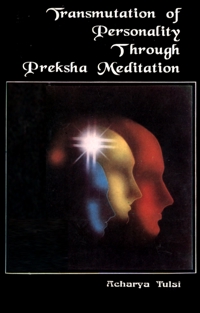
Starting with the gross, one enters more subtle regions;
Through constant body-perception, all suffering is removed!
He who keeps outward and inner equanimity,
Him no extremes of heat and cold torment.
If through extraversion could man become perfect,
It would be like getting butter without any churning!
In the preliminary stages of meditation, the practice of breath-perception is very easy and beneficial. Even novices experience little difficulty in practising breath perception. What is the object of perception in the next stage?
We have before us two kinds of worlds
- a gross world
- a subtle world
Most people spend their life in the gross world. They find little opportunity for entering the subtle world.
Dhyana is a process of moving form the gross to the subtle. Through constant awareness of the gross, the mind becomes fully concentrated, and this concentration opens the door to the subtle world. Perception of body is an instance thereof. The practice of body-perception after breath-perception is very useful from this point of view.
Body-perception means the observation of the body within and without - from the outside to the inward core of being. When we start observing the body, we first perceive the grosser elements. As the practice of body-perception matures, we begin to grasp the subtler elements, too. Our body is full of vibrations. There is in it bioelectricity, which sets moving all the bodily activities and is responsible for biochemical changes.
There is the central nervous system at work in the body, also the endocrine system. The vibrations of knowledge and action are also active within, as are all the constituent elements of the body. One becomes acquainted with all this manifold activity through body-perception. The consummation of practice is the vision of one's aura. It is thus possible to perceive the subtler and the subtlest movements of the body.
This way of body-perception is the path leading from the gross to the subtle.
By practising body-perception, one comes to know the innersecrets of the body. One becomes acquainted with all the activity going on within, and one perceives one's aura, too. The question is where all this tends to. Those who know these things, live, and those who are ignorant of all this, also live. The famous philosopher Russel, when talking to some scholar, felt that it was impossible to be happy in this world. But when he talked with his own gardener, the simple-minded Thomas, his perception of the world underwent a change. Does this not prove that the extension of knowledge is the cause of unrest?
That knowledge should be the cause of unrest does not sound logical. Half-knowledge or non-factual knowledge is certainly the cause of unrest. But then knowledge itself is not to blame for this; what is at fault is the incompleteness or the impropriety of it.
There is a moral saying:
Knowledge ends vanity born of arrogance.
If someone accumulates a great deal of learning and becomes insane,
Who is going to treat him?
People for whom even medicine serves as a poison,
are beyond cure.In my opinion, an acquaintance with the working of the physical organism increases awareness. With knowledge and awareness together, habits can be changed. In our brain there is an element - the memory-chemical. The physicians got hold of it. They extracted the memory chemical out of one organism and injected it into another.
The experiment was conducted on a rat. For days, the rat was given training, which led him from darkness to light. After the training was over, that rat spontaneously left darkness for light.
The memory-chemical of this rat was extracted and injected into another rat. The second rat too, like the first, deserted darkness forever.
The same experiment could be conducted on man.
But how can the experiment be performed in the absence of full knowledge?Among the vibrations of thought and feeling present in a man's brain, are also the vibrations of anger and pride. In order to replace them by worthier feelings, it is essential to know the waves and vibrations operating within. It may be difficult to acquire this knowledge through machines, but a meditator has no such difficulty. Through the practice of meditation he knows how concentration on one particular centre drives away anger; and on another centre ends egoism, and on still another centre serves to resolve problems.
Body-perception is a process of bringing about a change in one's habits; it is the science of life-transformation and the path for ending all suffering.
How can body perception bring about an end to suffering?
Mental suffering has two causes - attachment and aversion. Attachment and aversion arise because of our wrong notions about the body. Attachment and aversion produce suffering. It is difficult to achieve freedom from these by listening to discourses alone. Through the practice of body-perception, the inner truth about the body becomes apparent. As this truth unfolds, the net of illusions begins to dissolve.
Lord Buddha experienced the transitoriness of all life through body-perception. When he saw that the body is nothing but mere vibrations, the mental disposition of accepting matter as something solid and durable disappeared of itself.
Lord Mahavir reflected upon the transience of life for six months before initiation. Again, body-perception was the factor behind this contemplation.
Chakravarti Bharat attained omniscience in the Palace of Mirrors. How did it come about? Again, body-perception was a factor thereof. Constant perception of the body gave him an insight into its fleeting nature and he was illuminated.
The Buddha, Mahavir, and Bharat all practised body-perception. They realized the true nature of the body, directly experienced its transitoriness, and all their suffering came to an end.
- Suffering ensues only when the inner and the outer are not harmonises.
The sadhak who succeeds in harmonising his inner experience with the external phenomena, who is fully integrated, becomes immune from the effect of changing circumstances. In deep body-perception, it is immaterial whether the wind blowing outside is hot or cold. With the experiencing of the movement of consciousness through each and every particle of the body, all physical and mental, i.e., the inner and outer suffering stands dissolved.
If, through body perception, the extroversive consciousness turns into an introversive consciousness, one becomes immune to the influence of the outer environment. But the state of introversion is not easy to attain. Only a few have the capacity to go through the process of sadhana, which turns a man introversive. Is there a technique to end suffering before one reaches the stage of introversion?
If suffering could end and all one's problems be resolved without any effort on the part of the individual, then there would be no need for man to indulge in contemplation or reflection. If one could straightaway find butter, why bother about the whole exercise of milking the cow and the churning of the curd. However accomplished a man might be, if he really wants butter, he must churn it out of the curd. It has been said:
To milk the cow, to heat the milk, to cool it and set it to yield the curd, to put the curd into the churning pot and stir it constantly with the churning-stick till it is all frothy!
Why undertake all this labour?
Simply to get butter!To transcend bodily pleasure and pain, to be free from the suffering inherent in all sensation, is the essence of sadhana. The infallible method of achieving it is to practise body-perception. It does away with negligence and increases mindfulness. The feelings of attachment and aversion come to an end resulting in the development of equanimity.
 Acharya Tulsi
Acharya Tulsi
